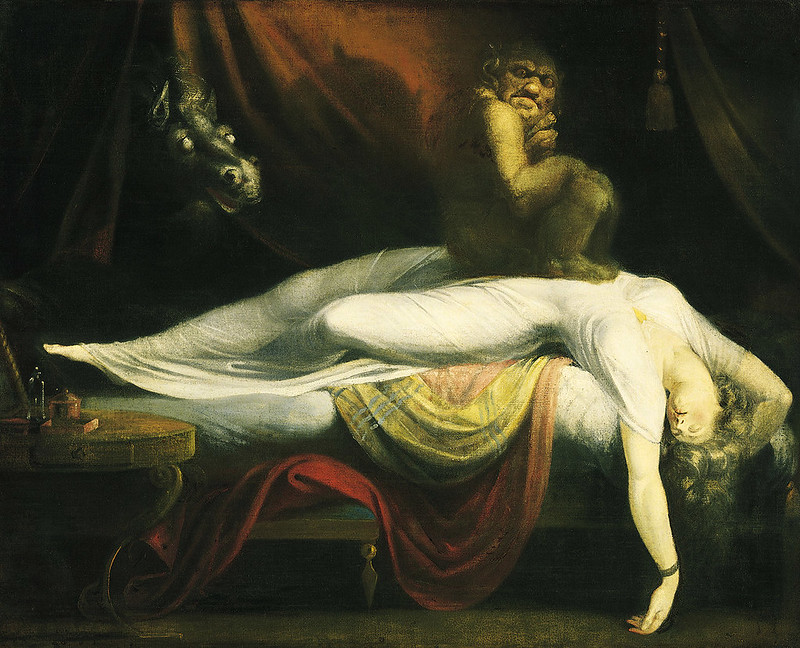
The Art of Dreams
Half our dayes wee passe in the shadowe of the earth, and the brother of death exacteth a third part of our lives.
(Thomas Browne, On Dreams)
…night after night, with calm incuriousness we open the door into that ghostly underworld, and hold insane revels with fantastic spectres, weep burning tears for empty griefs, babble with foolish laughter at witless jests, stain our souls with useless crime, or fly with freezing blood from the grasp of an unnamed dread ; and, with the morning, saunter serenely back from these wild adventures into the warm precincts of the cheerful day, unmoved, unstartled, and forgetting.
(Elizabeth Bisland, Dreams and their Mysteries)
Dreams have long proved a fertile ground for human creativity and expression, and no less so than in the visual arts, giving rise to some of its most arresting images. In addition to the many and varied dreams so important to religion and myth there has emerged, in the last few centuries since the birth of Romanticism, an exploration of the more personal dream-world. Indeed, with its link to the unconscious, the form has perhaps proved the perfect vehicle for those artists looking to surface that which lies submerged – desire, guilt, fear, ambition – to bring to light the truth the waking mind keeps hid.
No doubt, also, artists have been attracted to the challenge of giving form to something so visually intangible as a dream, a challenge taken up in many ways through the centuries. More often than not there appears the sleeping body itself, with the dream element incorporated in a variety of ways.
Common is for the dream sequence to appear in a totally separate part of the image, as if projected on the walls of the sleeping mind: often in the midst of that familiar floating cloud, but also as emerging from nearby objects or events of the day (see the Toyokuni image below) . Also common, particularly in the depiction of nightmares, is for the figures of the dream to simply appear as though in the room with the sleeper, often directly upon the body itself (see the Fuseli below).
With the advent of photography, and the potential of double exposures, we see also a different way of trying to capture that intangibility of the dream image. With both the Grandville and Redon images featured, and the work of the Surrealists they anticipate, we see a different approach entirely, one which looks past the sleeper to focus solely on the imagery of the dream itself, and in the process perhaps giving a more true impression of the strangeness and otherworldliness which so often characterises the dream experience.
Underlying Work: PD Wordlwide | Digital Copy: Various, see source for individual image.

The Nightmare, by Henry Fuseli (1781). Perhaps Fuseli’s best known work, it has been copied by other artists, including many engravings such as this one by Thomas Burke – Source.
Henry Fuseli
Swiss, 1741-1825
A Nightmare You Won't Soon Forget
In this painting, a young woman lies across a bed, seemingly in the midst of a nightmare. A small demon sits on her stomach, while a horse pokes his head through the drapery in the background. The woman depicted in this painting is probably Anna Landholdt, who Fuseli had fallen in love with. Some scholars believe that The Nightmare was painted as a revenge fantasy; since Landholdt did not return the artists' advances, Fuseli condemned her to experience a permanent nightmare. There is also a portrait on the reverse of this canvas which some believe is of Landholdt. DID YOU KNOW? The famous psychoanalyst Sigmund Freud considered The Nightmare representative of sublimated sexual desires, and kept an engraved copy of it hanging in his Vienna apartment.
Visit our Celebrating 125 Years Playlist for more videos! http://ow.ly/3ouYQ
Dream-land (ca. 1883), an etching by S.J. Ferris after a painting by C.D. Weldon – Source.
 El sueño del caballero, or The Knight’s Dream (ca. 1655), by Antonio de Pereda – Source.
El sueño del caballero, or The Knight’s Dream (ca. 1655), by Antonio de Pereda – Source.  The Jockey’s Dream (ca. 1880), published by Currier and Ives – Source.
The Jockey’s Dream (ca. 1880), published by Currier and Ives – Source. 
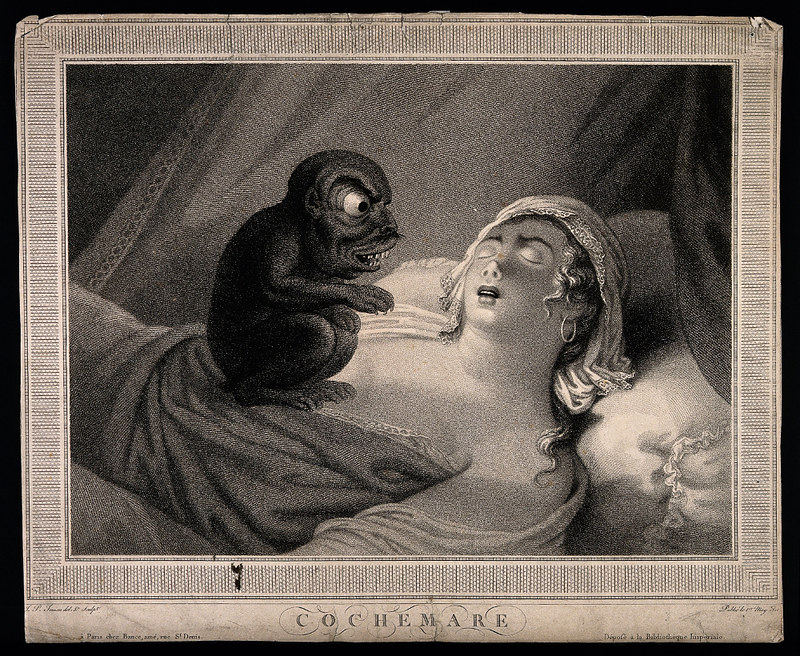 Nightmare (1810), by Jean Pierre Simon – Source: Wellcome Library.
Nightmare (1810), by Jean Pierre Simon – Source: Wellcome Library. 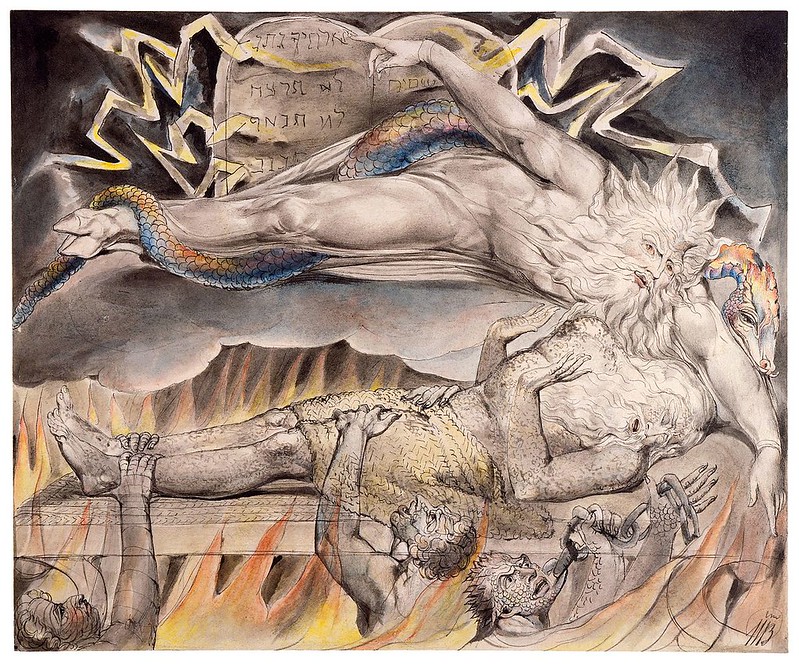 Job’s Evil Dreams (1805), by William Blake, from a series of 19 watercolours illustrating the Book of Job that Blake painted in 1805-6 for Thomas Butts – Source.
Job’s Evil Dreams (1805), by William Blake, from a series of 19 watercolours illustrating the Book of Job that Blake painted in 1805-6 for Thomas Butts – Source. 
A Child Dreams of the Passing of Time (17th century), by Boetius Adamsz Bolswert – Source.
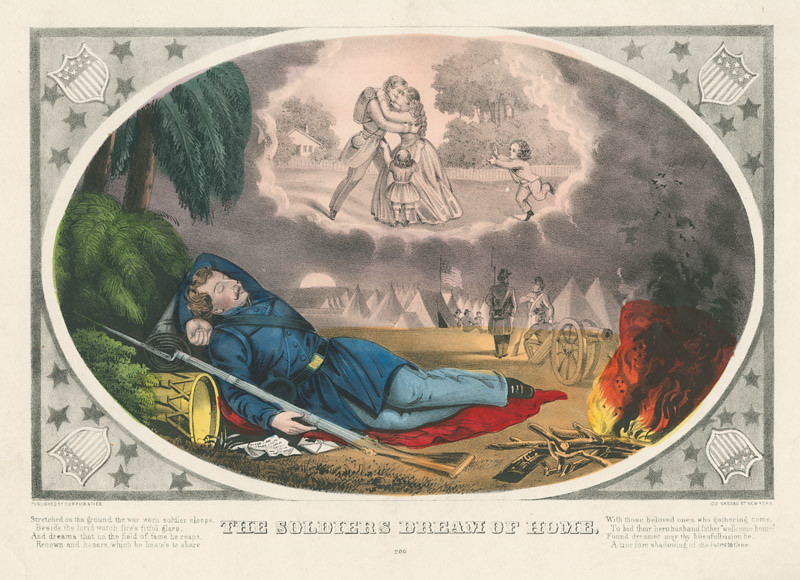 The Soldiers Dream of Home (ca. 1861), by unknown artist – Source.
The Soldiers Dream of Home (ca. 1861), by unknown artist – Source. 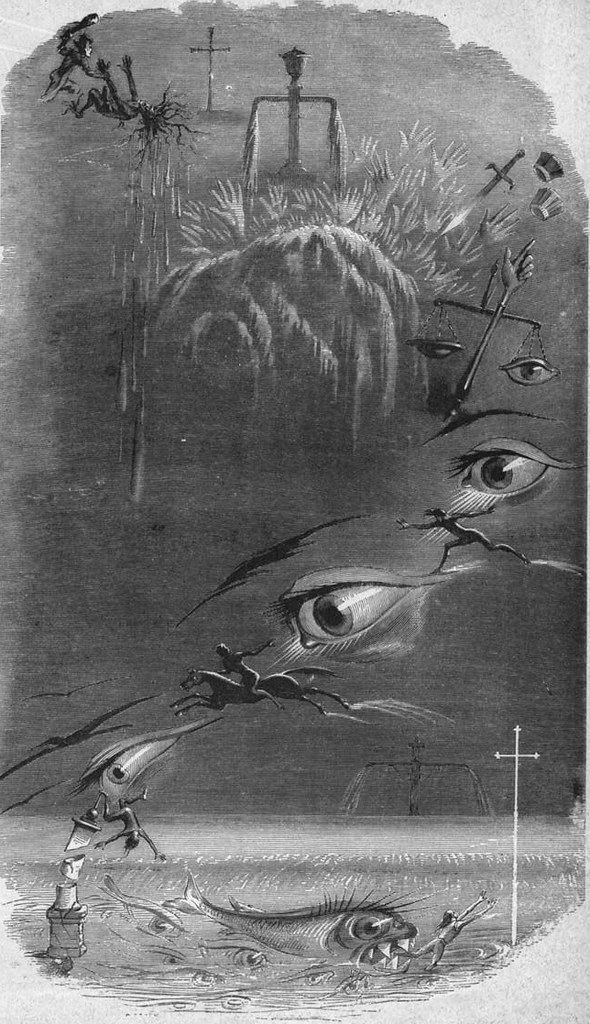
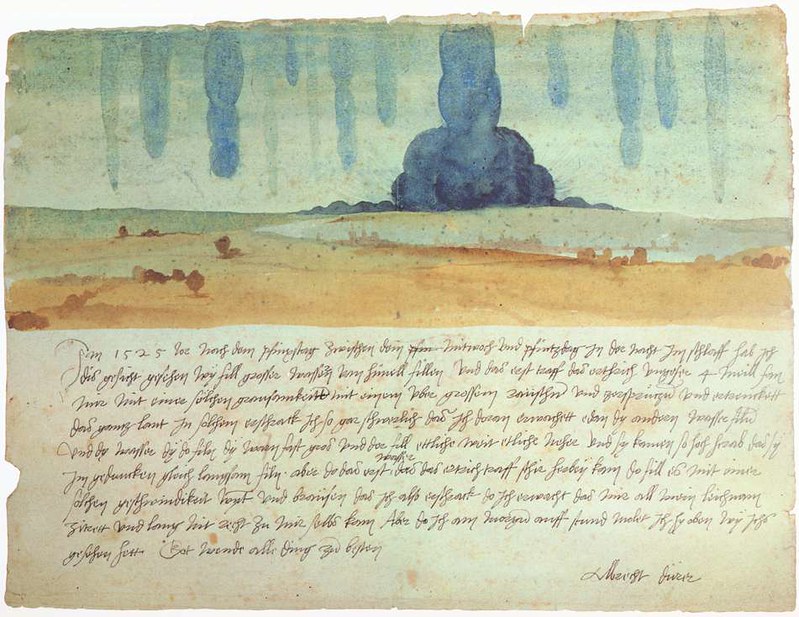
Dream Vision; A Nightmare (1525), by Albrecht Dürer: a watercolour and accompanying text describing an apocalyptic dream Dürer had on the night of 7-8th June 1525. The text reads: In 1525, during the night between Wednesday and Thursday after Whitsuntide, I had this vision in my sleep, and saw how many great waters fell from heaven. The first struck the ground about four miles away from me with such a terrible force, enormous noise and splashing that it drowned the entire countryside. I was so greatly shocked at this that I awoke before the cloudburst. And the ensuing downpour was huge. Some of the waters fell some distance away and some close by. And they came from such a height that they seemed to fall at an equally slow pace. But the very first water that hit the ground so suddenly had fallen at such velocity, and was accompanied by wind and roaring so frightening, that when I awoke my whole body trembled and I could not recover for a long time. When I arose in the morning, I painted the above as I had seen it. May the Lord turn all things to the best – Source.
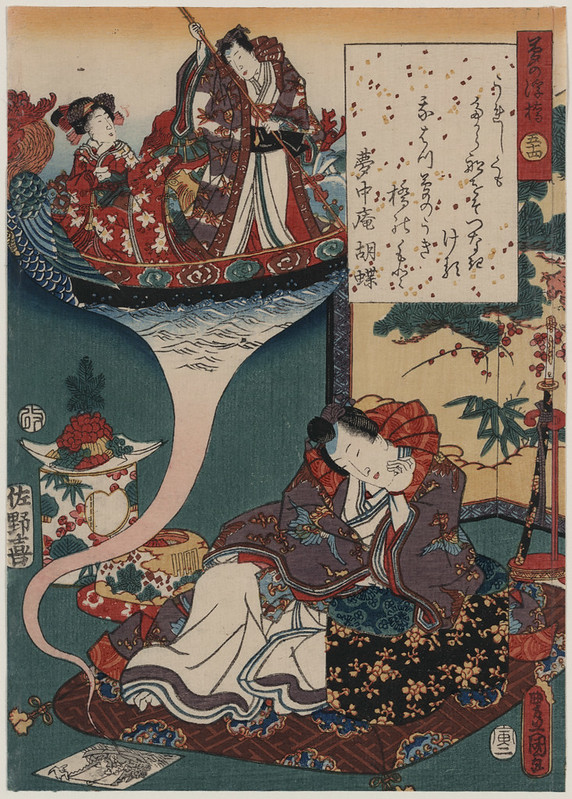
 The Artist’s Dream (1840), by George H. Comegys. The artist, with his head down on a table in his studio, perhaps seeking divine intervention, is having a vision of great artists from the past, such as: Sir Joshua Reynolds, Rubens, Rembrandt, Titian, Leonardo Da Vinci, Raphael Michelangelo, and others – Source.
The Artist’s Dream (1840), by George H. Comegys. The artist, with his head down on a table in his studio, perhaps seeking divine intervention, is having a vision of great artists from the past, such as: Sir Joshua Reynolds, Rubens, Rembrandt, Titian, Leonardo Da Vinci, Raphael Michelangelo, and others – Source.  Legend of St Francis: Dream of the Palace (1297 – 1299), by Giotto – Source.
Legend of St Francis: Dream of the Palace (1297 – 1299), by Giotto – Source. 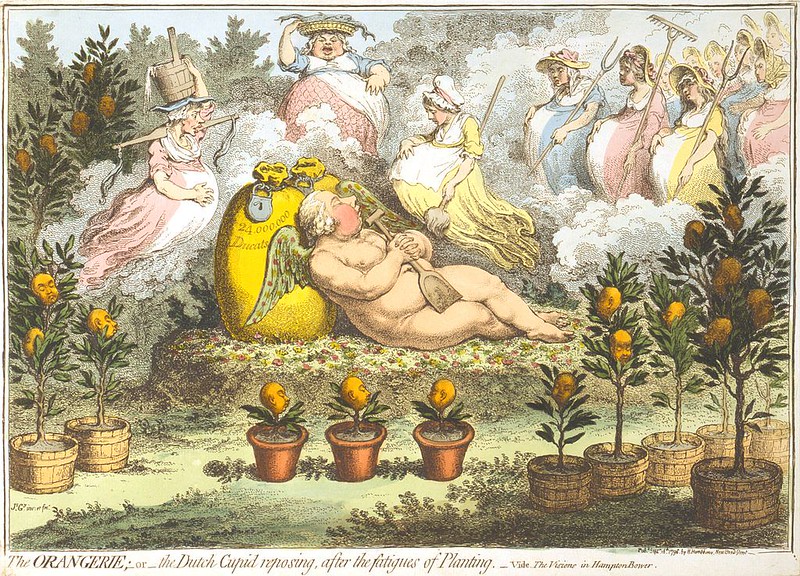 The Orangerie;—or—the Dutch Cupid Reposing After the Fatigues of Planting, depicting William V, Prince of Orange, as a fat, naked Cupid (1796), by James Gillray – Source.
The Orangerie;—or—the Dutch Cupid Reposing After the Fatigues of Planting, depicting William V, Prince of Orange, as a fat, naked Cupid (1796), by James Gillray – Source. 
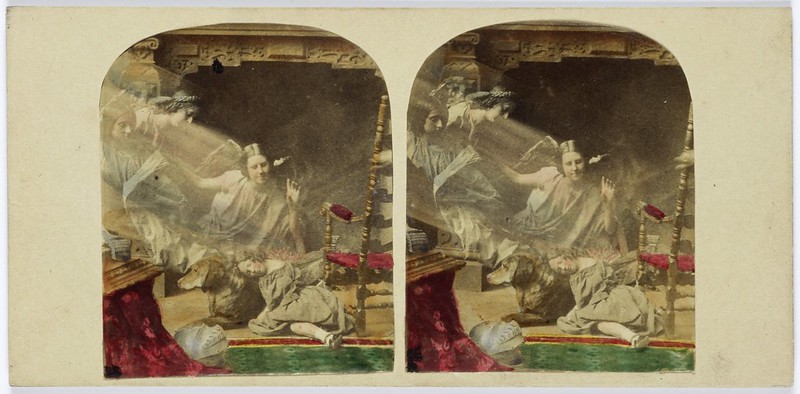 The Orphan’s Dream (19th century), by James Elliott – Source.
The Orphan’s Dream (19th century), by James Elliott – Source. 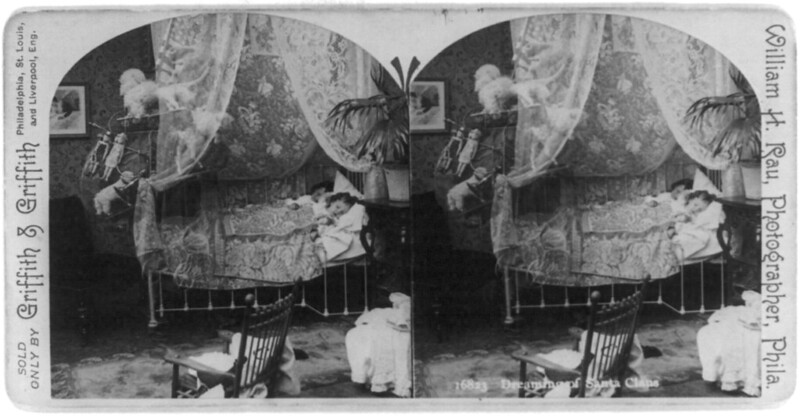 Dreaming of Santa Claus (ca. 1897), by William H. Rau – Source.
Dreaming of Santa Claus (ca. 1897), by William H. Rau – Source. 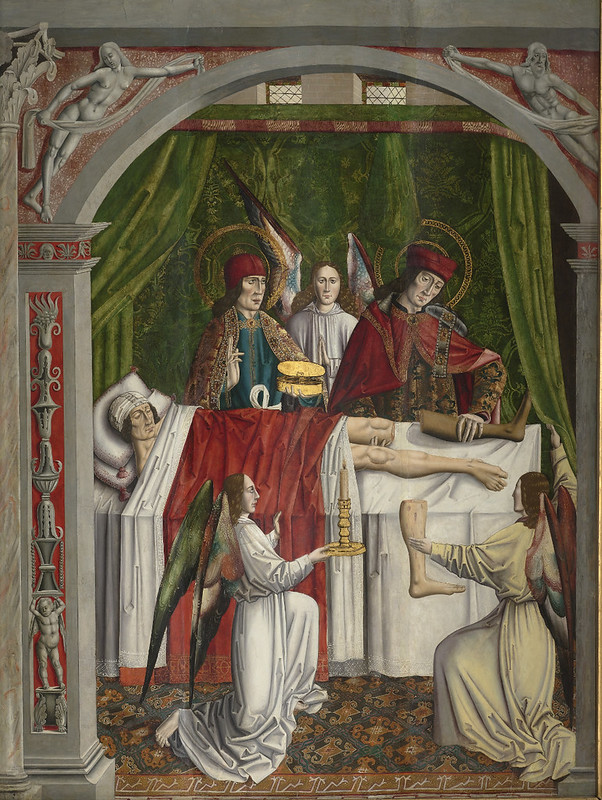
 Tako to ama, or The Dream of the Fisherman’s Wife (1814), an erotic ukiyo-e by Hokusai, from the book Kinoe no Komatsu (English: Young Pines), a three-volume book of shunga erotica first published in 1814. For an English translation of the rather racy text see the link to the source – Source.
Tako to ama, or The Dream of the Fisherman’s Wife (1814), an erotic ukiyo-e by Hokusai, from the book Kinoe no Komatsu (English: Young Pines), a three-volume book of shunga erotica first published in 1814. For an English translation of the rather racy text see the link to the source – Source. 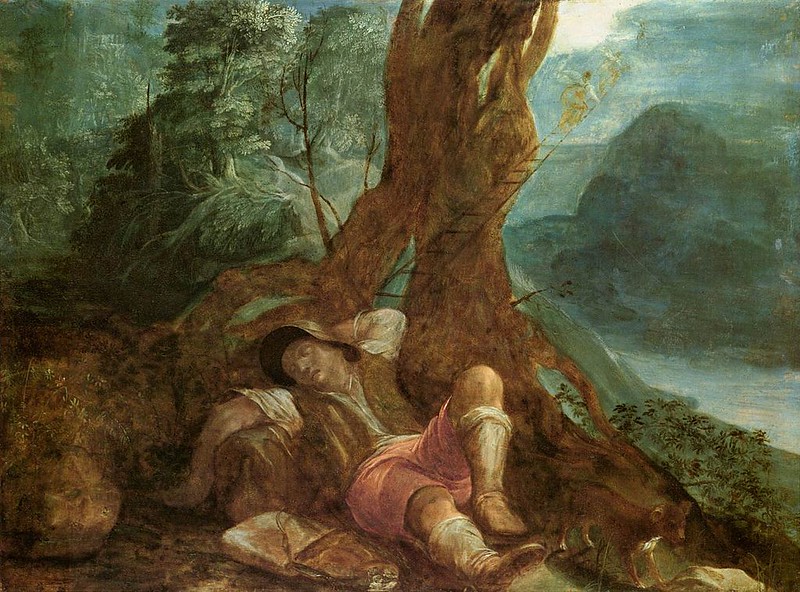 Jacob’s Dream (late 16th century), by Adam Elsheimer – Source.
Jacob’s Dream (late 16th century), by Adam Elsheimer – Source. 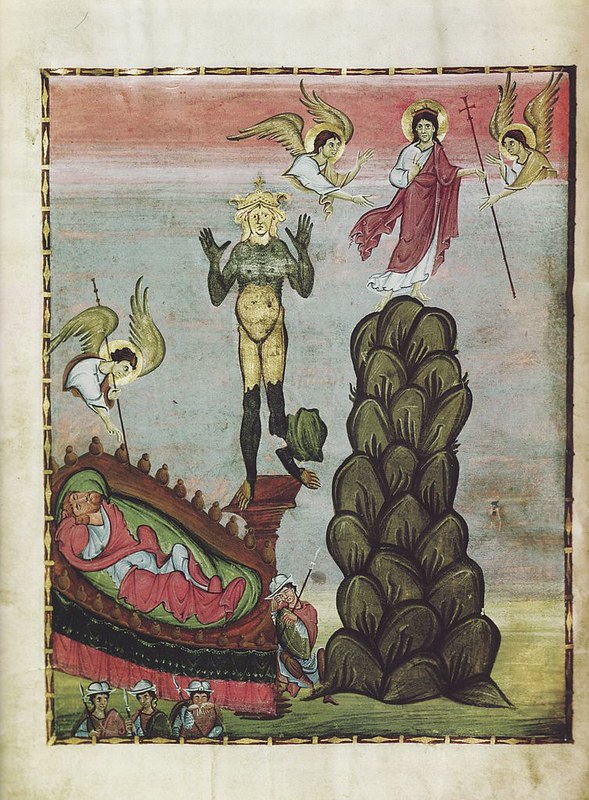
 The Dream of Pilate’s Wife (ca. 1879), by Gustave Doré. According to Matthew 27:19, While Pilate was sitting in the judgment hall, his wife sent him a message: “Have nothing to do with that innocent man, because in a dream last night, I suffered much on account of him.” – Source.
The Dream of Pilate’s Wife (ca. 1879), by Gustave Doré. According to Matthew 27:19, While Pilate was sitting in the judgment hall, his wife sent him a message: “Have nothing to do with that innocent man, because in a dream last night, I suffered much on account of him.” – Source.  ‘Emperor Godaigo, dreaming of ghosts in his palace (1890), by Ogata Gekkō – Source.
‘Emperor Godaigo, dreaming of ghosts in his palace (1890), by Ogata Gekkō – Source. 
Dream (1878 – 1882), by Odilon Redon – Source.

Little Nemo comic strip, by Winsor McCay (1906). This particular strip was from a European edition and never printed in the US – Source.
Tags: depicting dreaming in art, dreams, dreams in art, Dürer, gillray, grandville, hokusai, jacob's ladder, nebuchadnezzar, redon, surrealism
Details from Bosch’s Garden of Earthly Delights (ca. 1500)
Collection of detailed crops from Hieronymous Bosch's most ambitious work, The Garden of Earthly Delights. …Continued
The Surreal Art of Alchemical Diagrams
The varied tradition of alchemy has given birth to a whole host of strange and wondrous imagery over the centuries. Here we pick out some …Continued
Marvels of Things Created and Miraculous Aspects of Things Existing
Images from an exquisitely illustrated Persian translation, thought to hail from 17th-century Mughal India, of Zakariya al-Qazwini's medieval treatise on all things wondrous. …Continued
Emanuel Swedenborg’s Journal of Dreams and Spiritual Experiences in the Year 1744 (1918)
Dream diary of the 18th-century Swedish scientist, philosopher, religious teacher and visionary Emanuel Swedenborg. …Continued
Hypnotism Posters (ca. 1900)
A set of amusing turn-of-the-century hypnotism posters showing hypnotised people up to various strange shenanigans. …Continued
Raja Harishchandra (1913)
Based on the eponymous legend recounted in the Sanskrit epics, this is the very first full-length Indian feature — the beginning of Bollywood. …Continued
Celestial Phenomenon Over Nuremberg, April 14th, 1561
A woodcut and description of strange UFOs seen in the skies of 16th-century Bavaria. …Continued
The Sea Monk (ca. 1845)
A woodblock print, by the late Edo period artist Utagawa Kuniyoshi, illustrating the story of an encounter with the Sea Monk or Umibozu, a spirit …Continued
Sketches in Bedlam (1823)
A compendium of glimpses into the personalities and stories of more than 140 mental patients confined to the Bethlem Hospital in the early part of …Continued
The Friendship Book of Anne Wagner (1795-1834)
Pages from a friendship book of Anne Wagner, aunt to the poet Felicia Dorothea Browne, who herself has a number of entries in the album, …Continued
Phenomena Over and Under the Earth (1878)
An Austrian painter's beautiful presentation of various atmospheric conditions including will-o'-the-wisp, a moonbow, and the Northern Lights. …Continued
Lewis Hine’s Composite Photographs of Child Labourers (1913)
A unique set of composite photographs by Lewis Hine depicting Southern cotton mill workers. Each image was created by purposively rephotographing several workers upon the …Continued
The majority of the digital copies featured are in the public domain or under an open license all over the world, however, some works may not be so in all jurisdictions. On each Collections post we've done our best to indicate which rights we think apply, so please do check and look into more detail where necessary, before reusing.
All articles published under a Creative Commons Attribution-ShareAlike 3.0 license.
If you wish to reuse our material please refer to our attribution policy.
Strong Freedom in the Zone.
Source: https://www.pinterest.com/publicdomainrev/dreams-in-art/

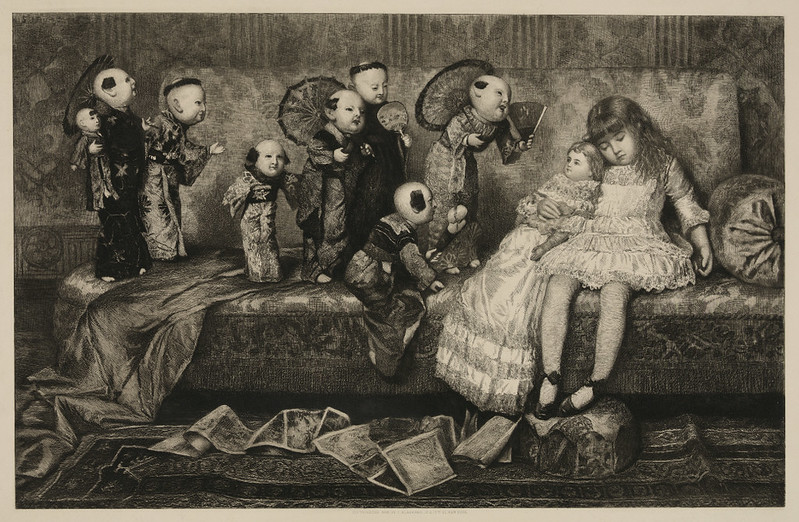












No comments:
Post a Comment